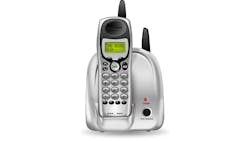ITU approves Wirepas-developed mesh for non-cellular 5G standard
The International Telecommunication Union (ITU) has given 5G approval to a technology developed mainly by Finland’s IoT mesh specialist Wirepas, a move that could boost the technology’s use in connecting and controlling lighting across cities and campuses.
Wirepas chaired a group at ETSI, a European standards organization based in France, which took the old DECT protocol that is commonly used in cordless telephones and updated it into a version called DECT-2020 NR (new radio).
The Geneva-based ITU has now added DECT-2020 NR to the 5G standard, both Wirepas and ETSI announced.
DECT-2020 NR enables device-to-device communication across cellular networks without using a cellular networking scheme, thus eliminating the cost of a mobile operator. Instead, it relies on mesh networking in which one device such as a light or a smart meter messages another, intelligently rerouting messages in the event of a device outage.
Using DECT-2020 NR, Wirepas has developed a networking product that it calls Wirepas Private 5G, which it describes as “non-cellular 5G.”
With Wirepas Private 5G, networks based on the LTE cellular chip use the same meshing software that Wirepas already offers commercially via its Wirepas Massive product. Wirepas Massive is based on a Bluetooth networking chip rather than an LTE cellular chip. Despite the Bluetooth silicon, Massive does not use Bluetooth mesh software. Wirepas and Bluetooth are rivals in the mesh business.
Wirepas Private 5G broadens Wirepas’ set of offerings to not only include LTE environments but also to cover wider distances, at around 3 km compared to the tens of meters in a Bluetooth-based Wirepas Massive installment. Wirepas Private 5G operates in the 1.9-GHz frequency band, compared to 2.4 GHz for Massive.
To be clear, Wirepas Private 5G is not intended as a replacement for cellular phone service, as it does not have the bandwidth or speed required to carry data services. But Wirepas believes it is an excellent alternative for thing-to-thing communication, where its avoidance of a mobile operator can save 90% in costs.
Wirepas CEO Teppo Hemia told LEDs Magazine that the company has trial customers that are already using its technology for street lighting and smart meters. He declined to identify the users but said Wirepas plans to offer Wirepas Private 5G commercially in 2022.
“Non-Cellular 5G is for large-scale sensoring and control type of applications [in] mMTC (massive Machine Type of Communication),” he told LEDs. “It is ideal for smart metering, smart buildings, and smart cities where the density is okay with 1–2-km-range radios. Also in places like hospitals, campus, factories etc. And also places where dedicated 1.9-GHz frequency is valued over crowded 2.4 GHz (like Wi-Fi) or pricey cellular frequencies… DECT-2020 NR is not only a protocol; it is a full connectivity standard. It includes all typical areas of connectivity (such as physical layer, MAC, routing etc.).”
Tampere-based Wirepas chairs the committee at ETSI, based in Sophia Antipolis, France, which developed DECT-2020 NR.
“There’s a lot of talk about private networks, but this is the first 5G technology which can support shared spectrum operation and multiple local networks in mobile system frequencies,” said Jussi Numminen, who is both vice chair of the ETSI Technical Committee DECT as well as head of RF and IPR for Wirepas. “We see this as a fundamental requirement for massive digitalization for everyone. With the ETSI standard, you get immediate access to a free, dedicated 1.9-GHz frequency internationally. It is a perfect match for massive IoT.”
The ITU is a United Nations agency that looks after technologies and standards in telecommunications, Internet, broadcast, satellite, software, artificial intelligence, utilities, financial tech, automotive and smart cities. It has over 900 members from 193 countries.
More on Wirepas
IoT mesh specialist Wirepas lands €14.4M venture round
Ingy strengthens ties with wireless mesh company Wirepas
Volume deal for Wirepas mesh could drive smart lighting installations
The latest in scalable controls? Wirepas might support 4 billion lights
MARK HALPER is a contributing editor for LEDs Magazine, and an energy, technology, and business journalist ([email protected]).
For up-to-the-minute LED and SSL updates, why not follow us on Twitter? You’ll find curated content and commentary, as well as information on industry events, webcasts, and surveys on our LinkedIn Company Page and our Facebook page.

Mark Halper | Contributing Editor, LEDs Magazine, and Business/Energy/Technology Journalist
Mark Halper is a freelance business, technology, and science journalist who covers everything from media moguls to subatomic particles. Halper has written from locations around the world for TIME Magazine, Fortune, Forbes, the New York Times, the Financial Times, the Guardian, CBS, Wired, and many others. A US citizen living in Britain, he cut his journalism teeth cutting and pasting copy for an English-language daily newspaper in Mexico City. Halper has a BA in history from Cornell University.





